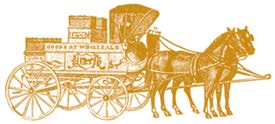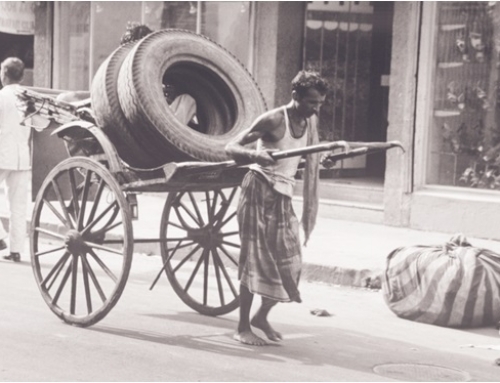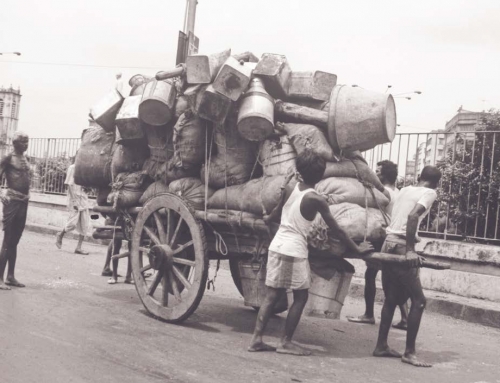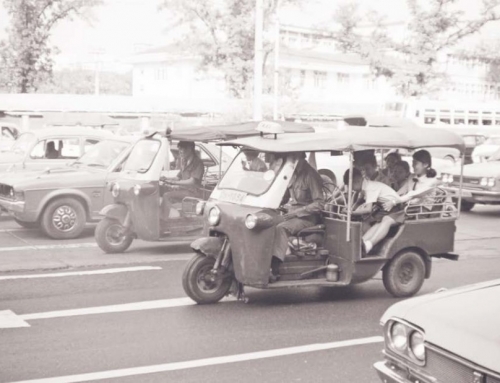[sharelines]Transportation and planning scholarship needs Mel’s skeptical optimism more now than ever.
I suspect that every one of Professor Melvin Webber’s colleagues experienced The Furrowed Brow at one time or another. Offer an assertion on almost any topic, and Mel would employ The Furrowed Brow—an exceedingly earnest and quizzical expression he wore while peppering you with questions challenging your proposition in a methodical point-by-point fashion. Conventional wisdom of any sort was especially likely to elicit The Furrowed Brow—“good planning requires public participation,” “we can’t build our way out of congestion,” “urban travel is underpriced” or any similar statement was vulnerable. “Why?” Mel would ask. “How do we know?” “Are you sure?” On a few occasions he asked me “Why?” “Why?” “Why?” so many times in a row that I thought that he was pulling my leg. But he wasn’t.
I eventually learned, with considerable relief, that Mel’s skepticism did not indicate disagreement. Not at all. Mel simply abhorred sloppy, uncritical thinking, and he was a preternaturally curious person. He was especially interested in the application of new ideas and clever insights on the real world—particularly as they related to travel or urban life. Conventional wisdom among practitioners and complex but poorly-premised analyses by researchers were singled out for particular attention. His questions, however, were sincere and, if answered to his satisfaction, would elicit a nod and a smile.
Far from cynical, Mel was optimistic about the potential of quality research to improve transportation and planning practice. Confused thinking or illogical responses, on the other hand, evoked no nods or smiles. The Furrowed Brow remained, and the conversation would tail off awkwardly. I believe that the sort of skeptical optimism long practiced by Mel Webber is in increasingly short supply and is needed now more than ever. Most transportation and planning scholarship is applied in that it aims to both describe and improve the state of the world. This applied relevance is what draws many scholars to work in these fields, and what causes some in the more traditional, liberal disciplines to view our work with some suspicion. To some from mathematics or English, an examination of how the Bay Area Rapid Transit system has affected travel and development patterns can appear intellectually bereft, even vocational. While absolutely untrue, such perceptions persist.
The skeptical optimism long practiced by Mel Webber is in increasingly short supply and is needed now more than ever.
Further, the normative zeal with which some scholars approach their work—among some who advocate privatization or new urbanism for example—can exacerbate negative perceptions of the intellectual depth and rigor of transportation and planning scholarship. Such research can rightfully be viewed as advocacy, and lacking in the dispassionate research designs central to first-rate academic scholarship. While such advocacy research is often embraced by like-minded practitioners and elected officials, it tends to give short shrift to countervailing evidence and hence breeds cynicism about its objectivity.
Despite the advocacy in some research, the gap between the cutting edge of transportation and planning research and the day-to-day realities of practice has grown over time. For example, travel behavior research long ago left the four-step travel demand modeling process in the dustbin of history. Publishing refereed research on the four-step model today is akin to publishing on the newest developments in eight-track audio technology. But, scholarly disinterest notwithstanding, the four-step model remains firmly entrenched in practice, held steady by decades of legal precedent. Although researchers have made some encouraging progress towards developing better models of travel behavior, these models have not found their way into planning practice, and the research/practice gap continues to widen. (Some of the biggest advances in practice, it should be noted, have been in places like Sacramento and the San Francisco Bay Area, often in collaboration with University of California researchers).
Why has the research/practice gap in travel behavior analysis, and so many other areas of transportation and planning, grown so wide? Part of the reason is the inherent conservatism of practitioners, especially those in public agencies where deviation from established practice increases vulnerability to public criticism and legal challenges. But a large part of the gap is caused by researchers who are uninterested in translating their often highly abstract or technical research into forms easily understood by practitioners and elected officials.
Mel Webber’s career, most notably his second career as creator and editor of ACCESS magazine following his retirement, sought to meaningfully translate academic scholarship for practitioners while insisting that arguments be carefully crafted to sway even the most skeptical reader. And while many of the top transportation scholars in the world have written for ACCESS, Mel’s fingerprints are all over nearly every article. Good writing, the saying goes, makes readers feel smart, and for fourteen years Mel made ACCESS readers feel brilliant. The formula was simple: start with good research; engage a team of talented, patient co-editors; insist on high production values to create an entirely distinctive eye-catching look; and distribute it free to any and all interested readers.
From the first issue, with articles about demographic trends in vehicle use, compulsory ridesharing programs, environmentally friendly vehicles, pavement wear, and commuter stress, to the most recent articles on transit privatization, aesthetics in system design, climate change, and localized vehicle emissions exposure, the pages of ACCESS have made a stunning array of topics, well, accessible to practitioners and decision-makers. Most ACCESS authors will tell you that while refereed publications may be the coin of the academic realm, responses to ACCESS articles, from both practitioners and academics, tend to dwarf even the most high-profile academic publications. It’s perhaps a sad statement about the state of transportation and planning scholarship that ACCESS has had and continues to have the field almost entirely to itself.
So while The Furrowed Brow was distinctively Mel, transportation and planning scholarship needs his brand of skeptical optimism more now than ever: to fend off academic critics of applied research; to push us to be as skeptical about conclusions we favor as those we oppose; to temper the excesses of advocacy scholarship; and most importantly, to pursue research that can meaningfully influence transportation and planning practice for the better. I’m optimistic that we can do these things. But will we? About that, I must confess, I remain skeptical.






